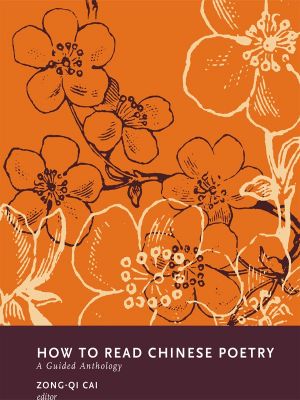How to Read Chinese Poetry

- Authors
- Cai, Zong-qi
- Publisher
- Columbia University Press
- Tags
- poetry , anthologies (multiple authors) , asian , poe009000 , poe001000
- ISBN
- 9780231511889
- Date
- 2007-12-28T00:00:00+00:00
- Size
- 25.91 MB
- Lang
- en
In this "guided" anthology, experts lead students through the major genres and eras of Chinese poetry from antiquity to the modern time. The volume is divided into 6 chronological sections and features more than 140 examples of the best shi, sao, fu, ci, and qu poems. A comprehensive introduction and extensive thematic table of contents highlight the thematic, formal, and prosodic features of Chinese poetry, and each chapter is written by a scholar who specializes in a particular period or genre. Poems are presented in Chinese and English and are accompanied by a tone-marked romanized version, an explanation of Chinese linguistic and poetic conventions, and recommended reading strategies. Sound recordings of the poems are available online free of charge. These unique features facilitate an intense engagement with Chinese poetical texts and help the reader derive aesthetic pleasure and insight from these works as one could from the original.
In this "guided" anthology, experts lead students through the major genres and eras of Chinese poetry from antiquity to the modern time. The volume is divided into 6 chronological sections and features more than 140 examples of the best shi , sao , fu , ci , and qu poems. A comprehensive introduction and extensive thematic table of contents highlight the thematic, formal, and prosodic features of Chinese poetry, and each chapter is written by a scholar who specializes in a particular period or genre. Poems are presented in Chinese and English and are accompanied by a tone-marked romanized version, an explanation of Chinese linguistic and poetic conventions, and recommended reading strategies. Sound recordings of the poems are available online free of charge. These unique features facilitate an intense engagement with Chinese poetical texts and help the reader derive aesthetic pleasure and insight from these works as one could from the original.